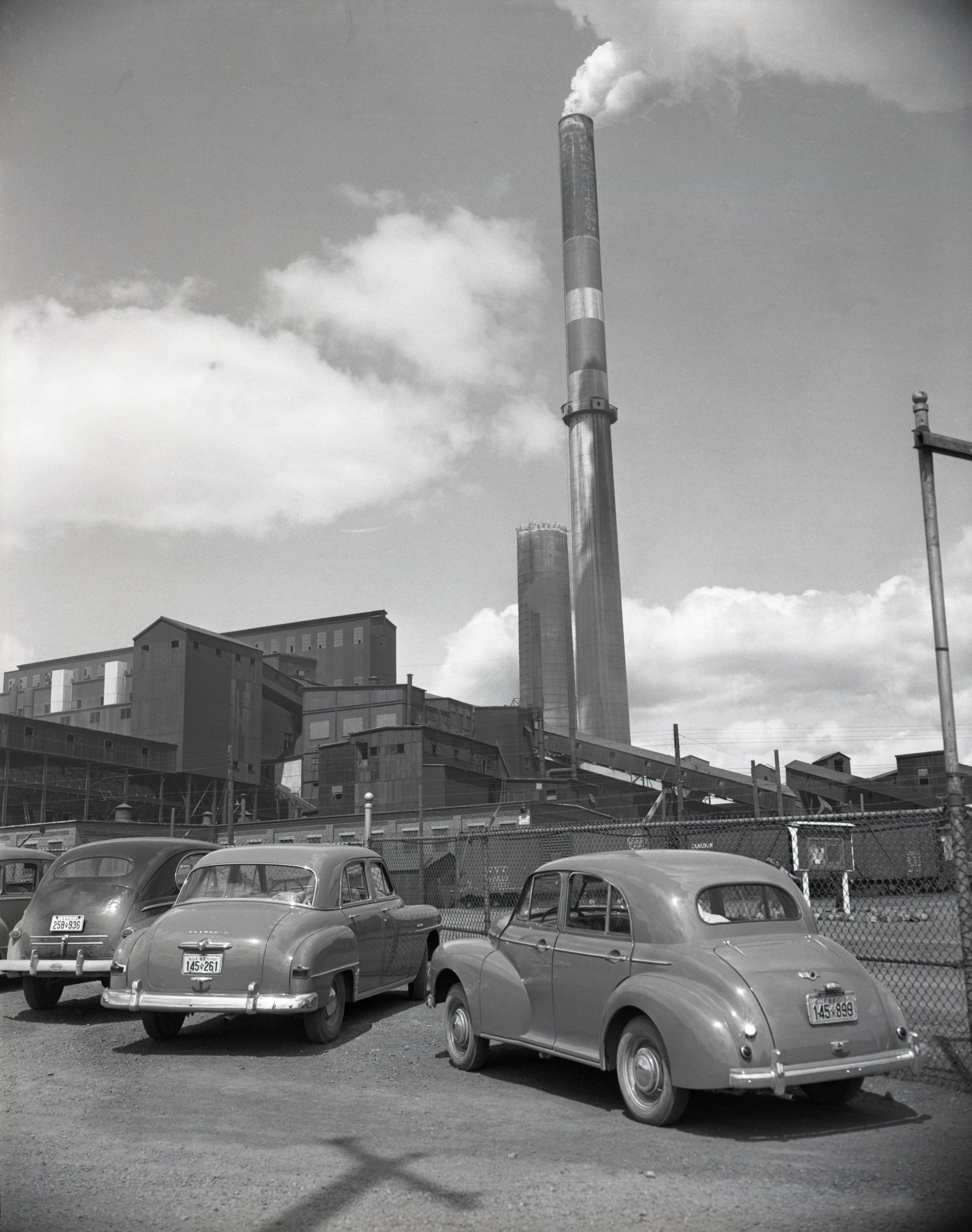Interview with former Horne smelter foreman Rodolphe Cloutier.

Date: August 2015
Credits: Corporation de la maison Dumulon.
Image credits: BAnQ Rouyn-Noranda, Joseph Hermann Bolduc funds, mine series. 08Y,P124,S32,P370-51-24.
Rodolphe Cloutier: “To heat ores, the smelter previously used coal and oil. They stopped doing that when gas arrived here in town. The smelter then started to be gas-fired. There were previously three flat furnaces that we called “reverbs” for “reverberatory furnaces”. It was linked to six boilers that created steam, as might be expected. All buildings were steam-heated. The reverberatory furnaces were crazy polluting. They stopped heating that way because it was very polluting. That’s when the infamous reactor came out. It was life changing for Noranda Mines. It helped cutting down pollution a lot because the gas would form inside and it would do the same as if it was burnt. Well, I don’t know. But the pollution was really reduced. Stuff would come in on one side and then come out on the other side as melted ores. On one end of the furnace there was copper and on the other end there was slag. Since copper is heavier, it would sink to the bottom. Then, they would cast it. Everything was done manually. Copper anodes had to weigh less than 700 lbs because it was sent to Montreal East Refinery. Over there, it had to fit into a frame of two electric slabs used to cast the copper again.”

